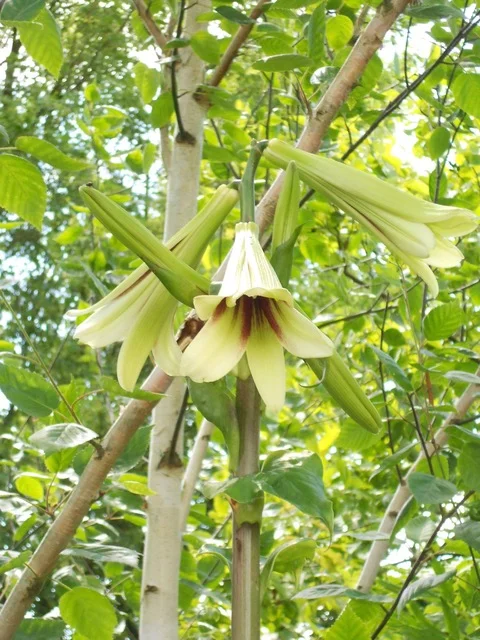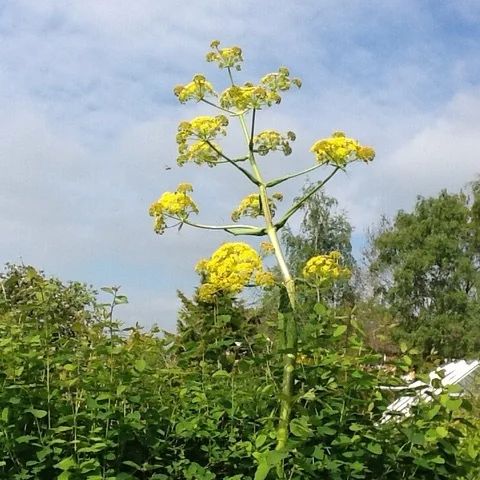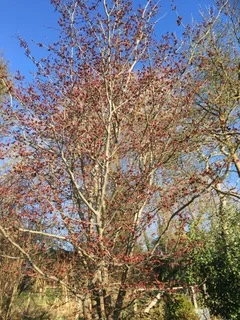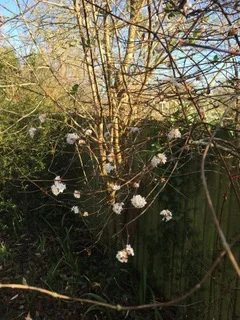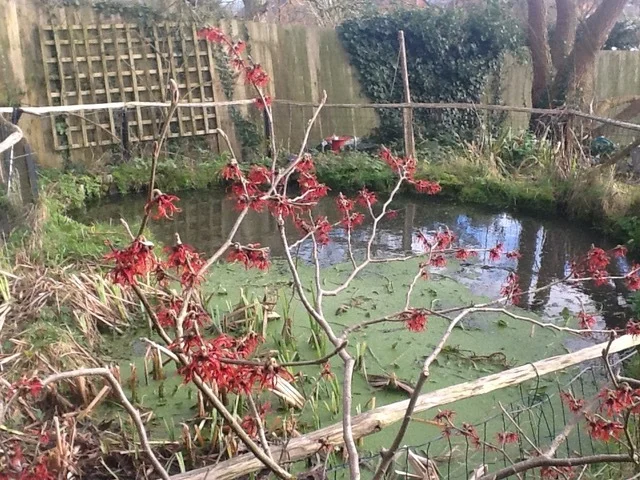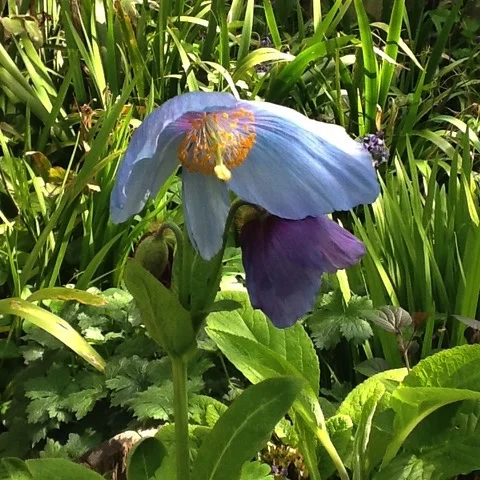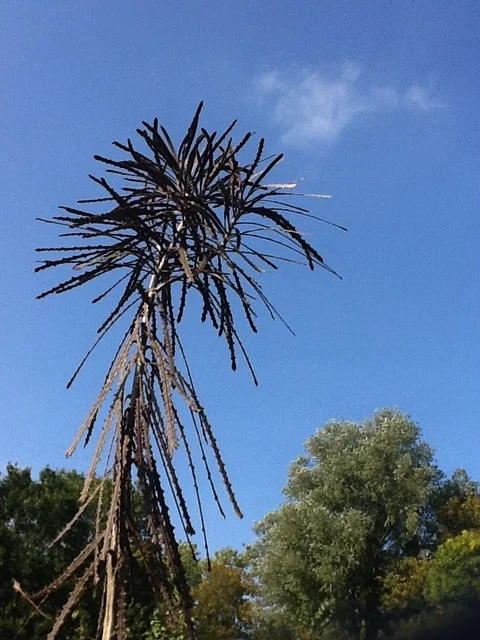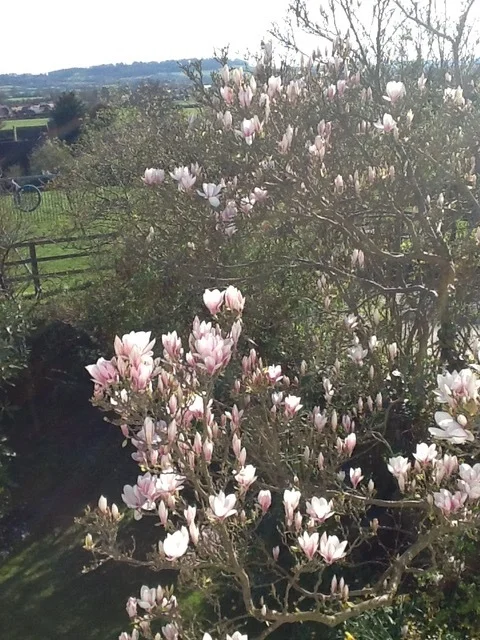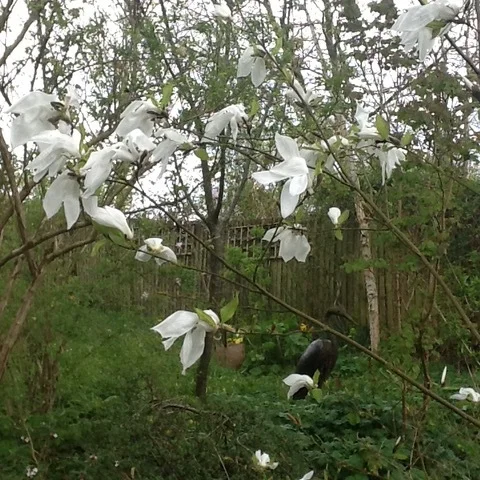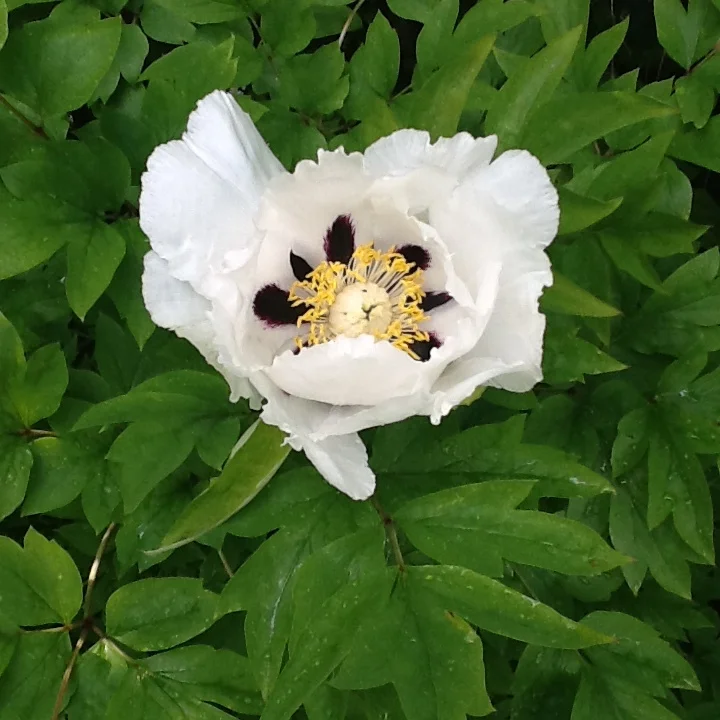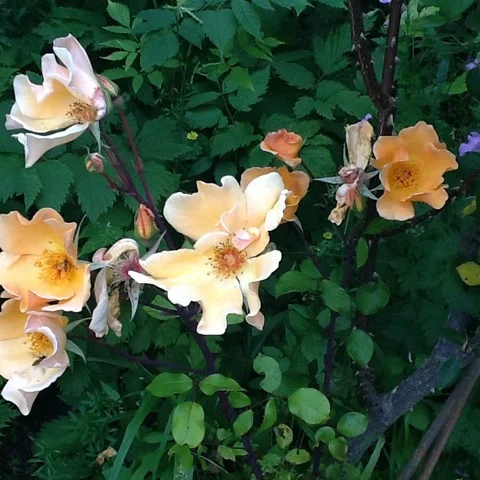Our Garden
We moved to The Vine in 1972 from our first home in Quainton at the foot of the village.
The Vine’s position, lying beneath the green, gently undulating Quainton hills has fine views of the Vale of Aylesbury. As the sun sets, the Chiltern hills to the east assume different colours: slate grey, blue and occasionally jade green.
Since then we have worked on the garden step by step with many gaps in the 1970s and 1980s when we were mostly abroad. We are by no means expert gardeners and have gradually learnt from others and by trial and error.
The Vine, which dates back to the 18th century, has been a farm as well as an inn. We have found the broken clay pipes of past rustic owners.
An old stone flagged path – now the North Bucks Way – runs up along the western boundary of the garden to the fields. When we arrived at The Vine the hedge was much overgrown and we have had it laid.
From the top of the garden you can see the windmill a few hundred yards away. It was built in 1830 and is being restored to working order. The flour will be sold in the village store. Beyond the mill stands our parish church. In the fields above the village, remains of medieval ridge and furrow cultivation stand out clearly when the sun is low.
We have enlarged the garden by acquiring a plot from our neighbours and it now extends right up to the fields above. A damp patch in the north-east corner of garden was excavated to release a spring. This runs throughout the year creating a marsh garden planted with primulas and fritilarias, and then flows into the pond dug by us in 1999.
Richard Paxton, our gardener, with Caroline.
We have stocked the pond with mirror carp, golden orfe, golden rudd, green tench and fresh water mussels. A fence round the pond deters the herons. Occasionally, the pond is visited by a grass snake.
Quainton stands on the north Bucks clay lands, on the southern flank of the famous Midland fattening pastures from where fatstock was herded long ago down the drovers’ roads to the London markets. The soil, though heavy, is remarkably fertile. The pH level is between 6–6.5 but in parts of the garden we have been able to reduce the pH to about 5 by growing lime-hating plans such as rhododendrons.
We have a keen interest in exotic plants, their provenance and the intrepid plant hunters who brought them back to this country from many parts of the world. Having worked in the Himalayas, I am particularly fascinated by plants from this area, from Tibet and other parts of China.
We love roses which thrive in our soil. We have been guided in our selection by the rose plantings at Sissinghirst, Hidcote and Kiftsgate gardens.
Within a framework of familiar European plants, a partly planned pattern has emerged: in the front garden, a few South American plants thrive; beyond the garage/stable there are Mediterranean, Australian and New Zealand plants; and above the pond in the dampest and most tranquil part of the garden are the Himalayan, Tibetan and Chinese plants.
We have laid a terrace of York stone above the garage/stable. A gnarled and beautiful apple tree stood on this spot, a remnant from the old garden we inherited. It died some years ago and we have replaced it with a Phillyrea latifolia (green olive) tree.
To provide a greater sense of enclosure and intimacy we have built a terrace on the south side of the terrace from South African eucalyptus poles. Along the terrace we have planted six Rose Madame Alfred Carrière (white scented, flowering throughout the summer and without prickles), two Clematis Perle d’Azur and one Clematis Ernest Markham.
Until last year we opened the garden under the National Gardens Scheme, in February and June. During the early opening, the snowdrops and winter aconites are a glorious sight.
The avian world, almost another realm, is all about us. I have seen swans and geese flying down the valley, green and pied woodpeckers call from the trees and ravens have returned to Quainton displaying high above their incredible courtship aerobatics. Our hills are a stopping off-point for migrating birds. Birds spotted include: Hobbies, Great Grey Shrike, Restart, Ring Ouzel, Stonechat, and Wheatear.
At night there is silence, only broken by the hooting of owls in the trees above the house.
Cardiocrinum giganteum: The Great Himalayan Lily. The bulbs are the size of tennis balls and take about eight years to flower, after which they die but leave bulbets to form future lilies. Last year we had a group of three reaching 10 ft in height.
Cardiocrinum giganteum (Giant Himalayan Lily)
Mediterranean fennel: Another spectacular giant reaching nine foot. It is recorded in ancient Greece where a stick of fennel was carried with a pine cone at its tip in Bacchic dances.
Details of a Greek Vase from 450 BC, showng Dionysus and the maenads.The figure on the left is holding a fennel plant with a fir cone stuck on the end.
Rosa omeiensis pteracanntha: An extraordinary rose with broad-based translucent crimson thorns which glow when the sun shines through them. It was first identified by Pere Delavay in the 1890s in Western China.
Dianella tasmanica: A recent acquisition. A tufted perennial forming clumps of lavender blue flowers and later dark blue berries.
Pinus bungeana:, The Lace Bark Pine, grown by us from seed and now five feet tall. When mature, its bark will resemble a plain tree. It was first ‘discovered’ by Dr Bungea in a temple garden in Peking in 1831.
Meconpsis sheldoni: The Himalayan blue poppy. It is a beautiful plant producing violet-blue flowers. Not easy to grow here, best in a large pot or tub.
Meconopsis sheldonii.
Magnolia Wada’s Memory: A lovely magnolia with large, loose white flowers. First spotted by me in Lincoln Inn Fields, London. Selected by the Arnold Arboretum from seed from M.kobus, sent by Mr K. Wada of Yokohama, Japan.
Arbutus unedo: The Killarney Strawberry Tree. Much cream-coloured blossom on the trees and many ‘strawberries’ which will gradually turn red if they are not beaten by frost. First introduced into this country by Elizabethan courtiers, Lord Leicester and Sir Francis Walsingham.
Drimys winteri: A vigorous tree in our front garden, already coppiced once but again growing fast. It bears small star-shaped flowers. Said to have been brought back originally to this country from South America by Sir Francis Drake. The South American Indians extracted medicine from the bark.
Spring blossoms - despite the vile weather in early 2019. Above: Persian ironwood (Parrotia persica).
Arbutus andrachnae
Viburnam (buckwoodii)
Hamamelis (witch hazel) – one of the first shrubs to flower.
Meconopsis lingholm.
Magnolia wilsonii.
Pseudopanax ferox.
Magnolia soulangeana.
Magnolia Wada's Memory.
Paeonia rockii.
Mrs Oakley Fisher
Fritillaria imperialis.

